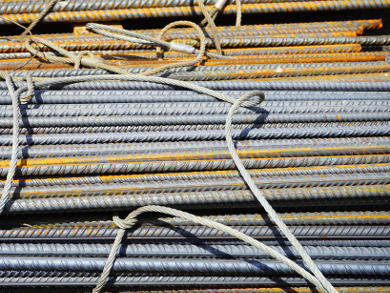Steel is recycled in large amounts with recovery rates estimated as high as 90 %. However, the collected scrap often contains other metals, such as copper and tin, which are problematic for reusing the steel and can, e.g., cause cracks during processing. This problem is usually tackled by using scrap high in impurities for more “tolerant” applications and by diluting the recycled steel with fresh material. Still, the contamination of recovered steel rises over time.
Julian M. Allwood and colleagues, Univerity of Cambridge, UK, have analyzed the amount of copper impurities in the global steel system and showed the implications for steel recycling in the future. The team estimated the copper concentration in steel in 2008 using literature data and evaluated the copper tolerance of end products in transportation, construction, industrial equipment, and other metal goods. The researchers then compared the predicted steel demand and copper tolerance and compared it with their estimate of the amount of copper in the steel supply up until the year 2100.
According to the team, the rising quantities of copper can be managed until about 2050 by using more contaminated material for less critical applications and diluting the scrap. After that, growing amounts of steel scrap will become unusable. The researchers suggest the use of better separation techniques in recycling as one possible solution. Another approach could be closed-loop recycling, which reuses high-quality steel within a single application, e.g., the automotive industry, and prevents it from being further contaminated.
- How Will Copper Contamination Constrain Future Global Steel Recycling?,
Katrin E. Daehn, André Cabrera Serrenho, Julian M. Allwood,
Environ. Sci. Technol. 2017.
DOI: 10.1021/acs.est.7b00997




